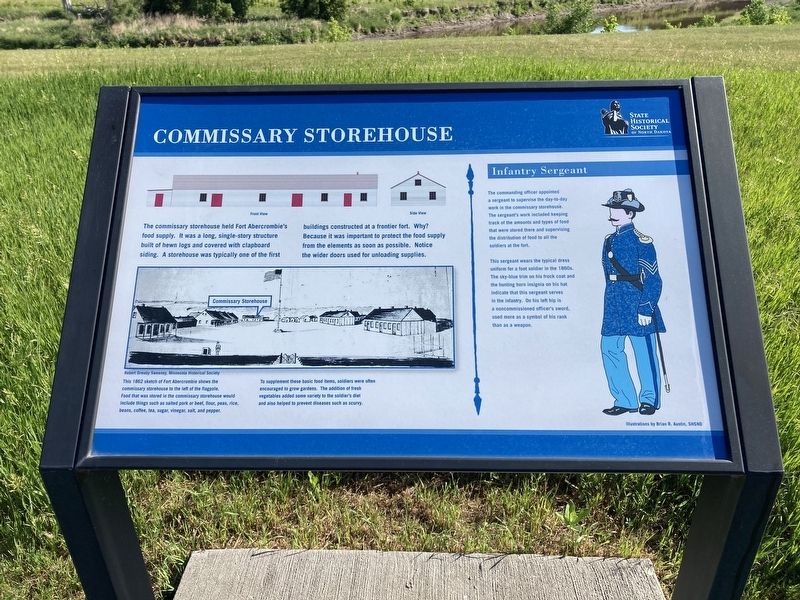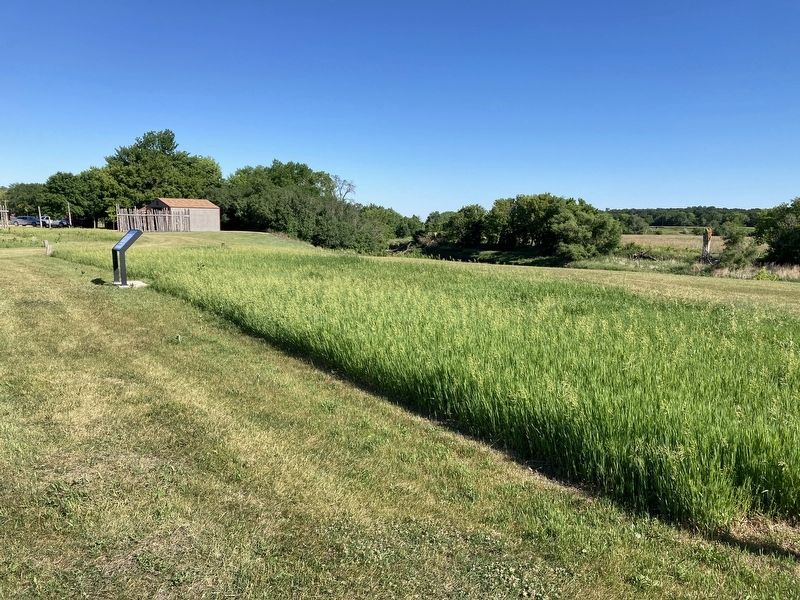Commissary Storehouse
This 1862 sketch of Fort Abercrombie shows the commissary storehouse to the left of the flagpole. Food that was stored in the commissary storehouse would include things such as salted pork or beef, flour, peas, rice, beans, coffee, tea, sugar, vinegar, salt, and pepper. To supplement these basic food items, soldiers were often encouraged to grow gardens. The addition of fresh vegetables added some variety to the soldier's diet and also helped to prevent diseases such as scurvy.
Infantry Sergeant
The commanding officer appointed a sergeant to supervise the day-to-day work in the commissary storehouse. The sergeant's work included keeping track of the amounts and types of food that were stored there and supervising the distribution of food to all the soldiers at the fort.
This sergeant wears the typical dress uniform for a foot soldier in the 1860s. The sky-blue trim on his frock coat and the hunting horn insignia
on his hat indicate that this sergeant serves in the infantry. On his left hip is a noncommissioned officer's sword, used more as a symbol of his rank than as a weapon.Erected by State Historical Society of North Dakota.
Topics. This historical marker is listed in this topic list: Forts and Castles. A significant historical year for this entry is 1862.
Location. 46° 26.727′ N, 96° 43.12′ W. Marker is in Abercrombie, North Dakota, in Richland County. Marker is on Broadway North (County Road 4) near Abercrombie Street. Touch for map. Marker is at or near this postal address: 935 Broadway N, Abercrombie ND 58001, United States of America. Touch for directions.
Other nearby markers. At least 8 other markers are within walking distance of this marker. Hospital / Lieutenant’s Quarters (within shouting distance of this marker); Quartermaster Storehouse (within shouting distance of this marker); Fort Abercrombie (within shouting distance of this marker); Stable (within shouting distance of this marker); Headquarters (within shouting distance of this marker); Guardhouse (within shouting distance of this marker); Barracks (within shouting distance of this marker); Carpenter Shop (about 300 feet away, measured in a direct line). Touch for a list and map of all markers in Abercrombie.
Credits. This page was last revised on July 14, 2021. It was originally submitted on July 13, 2021, by Connor Olson of Kewaskum, Wisconsin. This page has been viewed 76 times since then and 5 times this year. Photos: 1, 2. submitted on July 13, 2021, by Connor Olson of Kewaskum, Wisconsin. • Mark Hilton was the editor who published this page.

